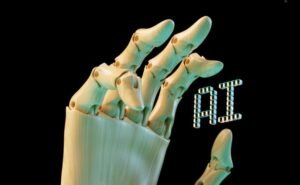How AI Tools Work
Artificial Intelligence (AI) tools are becoming increasingly prevalent in various areas of our lives. From virtual assistants like Siri and Alexa to recommendation systems on e-commerce websites, AI plays a crucial role in enhancing user experiences. In this article, we will explore the inner workings of AI tools and understand how they accomplish their tasks.
Key Takeaways:
- AI tools utilize machine learning algorithms to process and analyze large volumes of data.
- These tools are designed to mimic human intelligence in making decisions and solving complex problems.
- AI tools can be categorized into three main types: supervised learning, unsupervised learning, and reinforcement learning.
- Natural Language Processing (NLP) enables AI tools to understand and generate human language.
- AI tools rely on training data to improve their accuracy and performance over time.
Understanding AI Tools
AI tools are built upon machine learning algorithms, which allow them to learn from and make predictions or decisions based on data. These tools leverage the power of advanced statistical techniques and computational models to analyze patterns and identify relationships within datasets. By doing so, they can perform tasks that typically require human intelligence.
Machine learning algorithms enable AI tools to learn and adapt without being explicitly programmed.
There are three main types of machine learning algorithms used in AI tools:
- Supervised Learning: In supervised learning, AI tools are trained on labeled datasets. They learn to recognize patterns and make predictions based on the given input and corresponding output. This type of learning requires a significant amount of labeled data for training.
- Unsupervised Learning: Unsupervised learning algorithms work with unlabeled data. The AI tool identifies patterns and relationships within the data to make sense of it. This type of learning is useful for clustering similar data points or finding hidden patterns.
- Reinforcement Learning: Reinforcement learning involves training an AI tool through a system of rewards and punishments. The tool learns by interacting with an environment and receives feedback based on its actions. Over time, it improves its decision-making capabilities by maximizing rewards and minimizing punishments.
Natural Language Processing in AI Tools
Natural Language Processing (NLP) is a vital component of many AI tools. It enables machines to understand and interpret human language, both text and speech. NLP algorithms analyze language patterns, syntax, and semantics to derive meaning and generate appropriate responses.
NLP empowers AI tools to comprehend and respond to human language in a meaningful way.
AI tools equipped with NLP can be found in various applications, including chatbots, voice assistants, and automated customer support systems. They enable effective communication and interaction between humans and machines, enhancing user experiences and productivity.
Data Training for AI Tools
AI tools heavily rely on training data to improve their performance. During the training process, AI tools learn to recognize patterns, make predictions, and refine their decision-making abilities. The quality and diversity of the training data play a crucial role in determining the tool’s accuracy and generalization capabilities.
The availability of high-quality and diverse training data results in more accurate and reliable AI tools.
Training data can be sourced from various channels, including existing databases, user-generated content, or specifically curated datasets. The more data an AI tool is exposed to, the better it can understand and adapt to different scenarios.
Tables – Interesting Info and Data Points
| AI Tool | Main Function |
|---|---|
| Siri | Virtual assistant |
| Google Translate | Language translation |
| Type of Machine Learning | Description |
|---|---|
| Supervised Learning | AI learns from labeled data. |
| Unsupervised Learning | AI identifies patterns in unlabeled data. |
| Reinforcement Learning | AI learns through rewards and punishments. |
| Advantages of NLP in AI Tools | Limitations of NLP in AI Tools |
|---|---|
| Enhances human-machine interaction. | Challenges in understanding context and sarcasm. |
| Improves accuracy and speed in language processing. | Language barriers and dialect differences. |
Wrap Up
In conclusion, AI tools have revolutionized many domains by replicating human-like intelligence to solve problems and make decisions. Through machine learning algorithms and natural language processing, these tools have the capability to analyze vast amounts of data and understand human language. By continuously learning from training data, AI tools improve their accuracy and performance over time. The development of AI tools opens up new possibilities and advancements across various industries, transforming the way we live and work.

Common Misconceptions
Misconception 1: AI Tools are All-Powerful
One common misconception about AI tools is that they are all-powerful and can easily solve any problem. However, this is not the case as AI tools have limitations that must be taken into account.
- AI tools rely on data: The performance of AI tools heavily depends on the quality and quantity of data available. Without sufficient data, their accuracy and effectiveness can be compromised.
- Domain-specific knowledge: AI tools are typically designed for specific tasks or domains. They may not perform well outside of their intended use, so their capabilities should not be overestimated.
- Algorithm limitations: The algorithms used in AI tools have their own limitations. They may struggle with complex or uncertain situations, leading to less accurate results.
Misconception 2: AI Tools Can Fully Replace Human Judgment
Another misconception is that AI tools can completely replace human judgment. While AI tools can provide valuable insights and assist in decision-making processes, they do not possess the same level of understanding and reasoning as humans.
- Contextual understanding: AI tools may lack the contextual understanding that humans possess, which can lead to misinterpretation of information.
- Ethical considerations: AI tools do not have ethics baked into their decision-making process. Human judgment is necessary to consider ethical implications and make informed decisions accordingly.
- Diverse perspectives: AI tools cannot replicate the diverse perspectives that humans bring to problem-solving, limiting their ability to consider all possible angles.
Misconception 3: AI Tools are Infallible and Bias-Free
A common misconception surrounding AI tools is that they are infallible and free from biases. However, AI tools can inherit biases from the data they are trained on or the algorithms used to develop them.
- Data bias: AI tools rely on historical data, which can contain biases inherent in society, leading to biased outcomes.
- Algorithmic bias: Biases can also be introduced during the development of AI algorithms, either consciously or unconsciously, resulting in biased decisions or recommendations.
- Mitigating biases: It is crucial to address and mitigate biases in AI tools through robust data collection, diverse representation, and continuous evaluation to ensure fairness and avoid discriminatory outcomes.
Misconception 4: AI Tools Can Learn Everything on Their Own
There is a misconception that AI tools can learn everything on their own, without any human intervention. While AI tools have the ability to learn from data, they still require human involvement for training and fine-tuning.
- Training and supervision: AI tools need to be trained using labeled data and supervised by humans to ensure accurate learning and prevent undesirable outcomes.
- Feedback loops: Humans play a vital role in providing feedback to AI tools, helping them improve over time and refine their performance.
- Human intervention for generalization: Although AI tools can generalize from the data they are trained on, it is human expertise and knowledge that allow them to apply learnings to new situations.
Misconception 5: AI Tools Will Take Over Jobs Completely
Many people have the misconception that AI tools will completely take over jobs, leading to mass unemployment. While AI can automate certain tasks, it is more likely to augment human capabilities rather than completely replacing them.
- Task automation: AI tools can automate repetitive and mundane tasks, allowing humans to focus on more complex and creative work.
- Collaboration: AI tools can collaborate with humans, providing assistance and support in decision-making processes, rather than eliminating human involvement.
- New job opportunities: The development and integration of AI tools often create new job roles and opportunities, requiring human skills in areas such as AI development, data analysis, and ethical oversight.

How AI Tools Work
In recent years, AI (Artificial Intelligence) has become increasingly pervasive in various industries, revolutionizing the way tasks are accomplished. AI tools are designed to mimic human intelligence, enabling machines to process large amounts of data, learn from it, and make informed decisions. Here are ten examples of fascinating AI tools and their functionalities:
1. Language Translation
In a globalized world, language barriers can hinder effective communication. AI-powered language translation tools, such as Google Translate, use advanced algorithms to analyze and understand text in one language and convert it into another language.
2. Self-Driving Vehicles
Autonomous cars are one of the most groundbreaking applications of AI. Combining various sensors, cameras, and AI algorithms, self-driving vehicles can detect pedestrians, traffic lights, and other obstacles, making them capable of navigating roads without human intervention.
3. Voice Assistants
Virtual voice assistants, like Siri or Alexa, use AI to understand and respond to voice commands. These tools leverage natural language processing techniques to interpret user queries and provide relevant information or perform tasks, such as playing music or setting reminders.
4. Image Recognition
AI tools for image recognition can analyze visual data and identify objects, people, or even emotions. This technology is employed in various applications, including facial recognition for unlocking smartphones or detecting anomalies in medical imaging.
5. Fraud Detection
To combat fraudulent activities, financial institutions employ AI-based fraud detection systems. These tools use machine learning algorithms to analyze transaction patterns and detect suspicious activities, helping prevent identity theft or unauthorized access.
6. Chatbots
Chatbots are AI-powered conversational agents, capable of interacting with users in a human-like way. These tools are used to answer customer inquiries, assist with troubleshooting, and provide personalized recommendations, making customer service more efficient.
7. Sentiment Analysis
AI tools can analyze vast amounts of textual data, such as social media posts or customer reviews, to determine sentiment. Sentiment analysis enables businesses to understand public opinion, gauge customer satisfaction levels, and make data-driven decisions.
8. Medical Diagnosis
Machine learning algorithms can be trained on vast amounts of medical data to assist in diagnosing diseases. These AI tools can analyze symptoms, medical history, and test results to provide accurate and timely insights, aiding healthcare professionals in making diagnoses.
9. Personalized Recommendations
E-commerce platforms and streaming services use AI algorithms to provide personalized recommendations to users. By analyzing user behavior, preferences, and historical data, these tools suggest products, movies, or TV shows that match the user’s interests.
10. Virtual Reality
AI is also used in virtual reality (VR) systems to create immersive experiences. Using AI algorithms, VR tools can analyze user movements and interactions in real-time, adapting the virtual environment to enhance immersion and realism.
AI tools continue to evolve, bringing immense benefits to numerous industries. From language translation to self-driving vehicles, these tools demonstrate the power of AI in transforming our lives and enabling new possibilities.
Frequently Asked Questions
How AI Tools Work
What are AI tools?
How do AI tools learn?
What types of tasks can AI tools perform?
What data is needed for AI tools to work effectively?
Are AI tools capable of making mistakes?
Can AI tools be used across different industries?
Do AI tools replace human workers?
What are the ethical considerations when using AI tools?
How can I choose the right AI tools for my needs?
What does the future hold for AI tools?





